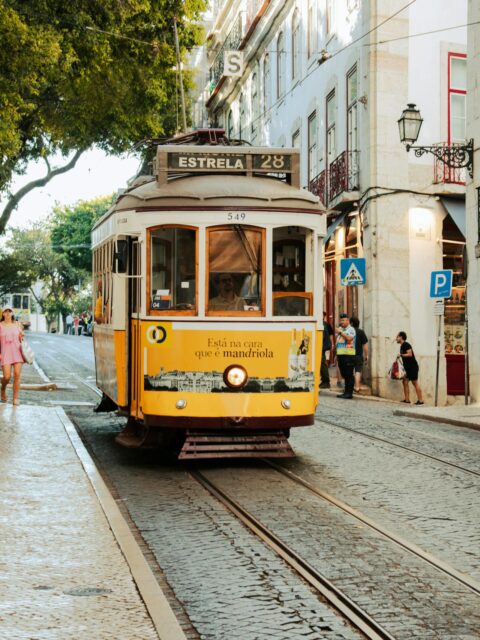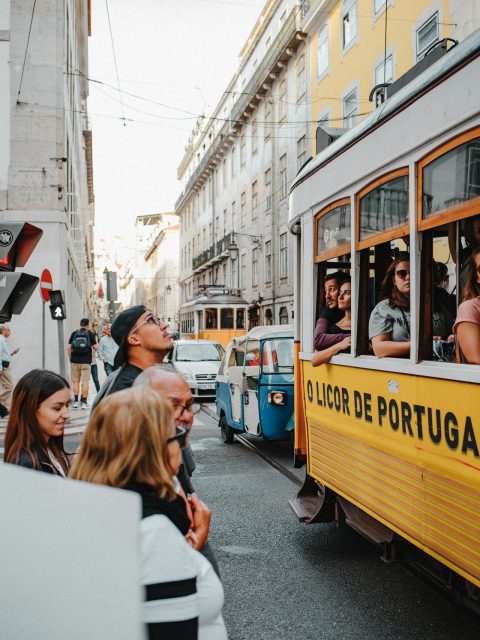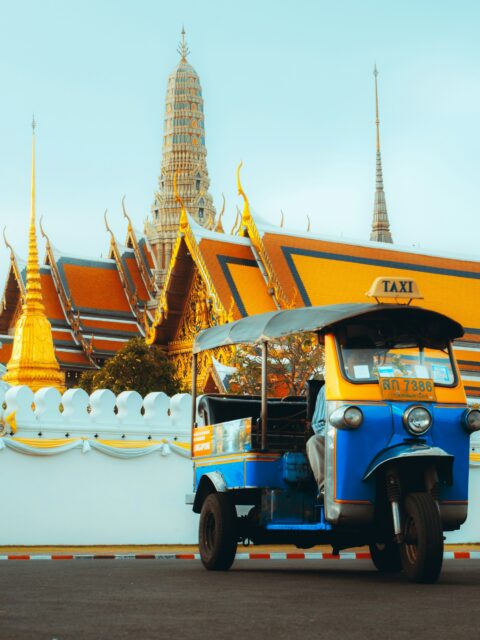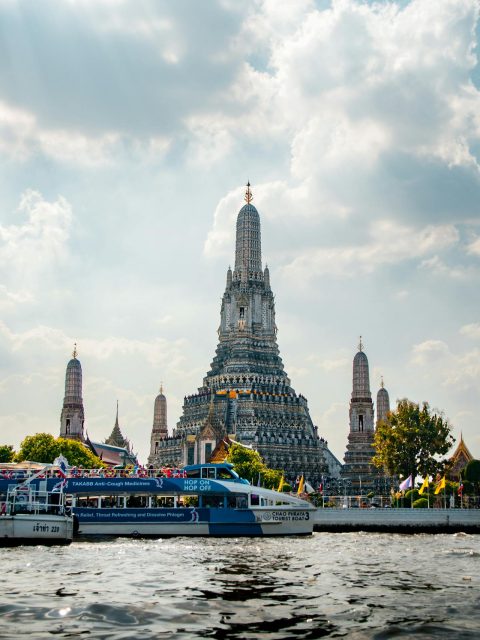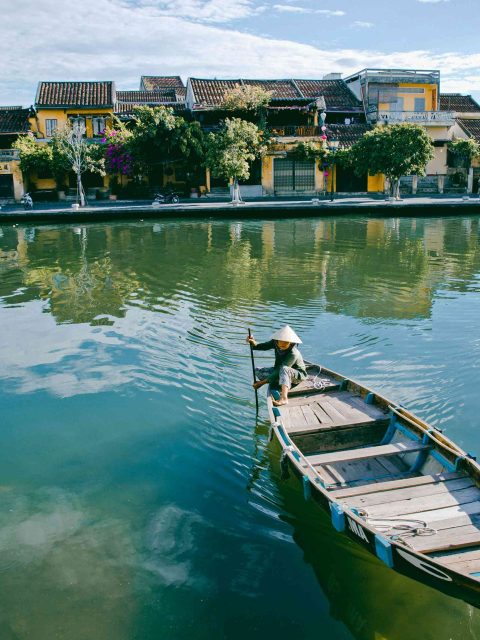Malaysia Travel Itinerary 2 Weeks
Discover Malaysia, a country where stunning landscapes, colonial towns, and a vibrant cultural tapestry come together in a unique blend. Known for its flavorful cuisine, Malaysia offers a culinary journey infused with Chinese, Indian, and Indonesian influences, promising a mouth-watering adventure with each dish. Despite its well-developed infrastructure and undeniable charm, Malaysia remains a hidden gem compared to its bustling neighbors, Singapore and Thailand. This comprehensive Malaysia travel itinerary 2 weeks provides everything you need to uncover West Malaysia’s travel gems, including its tropical islands, warm-hearted locals, and convenient travel routes.
Chapters
Malaysia Travel Itinerary 2 Weeks
For those eager to experience West Malaysia, two weeks is just the right amount of time. This guide offers a simple, day-by-day itinerary to help you enjoy the best of each destination, from the vibrant shores of Tioman Island to the historic charm of Melaka, the bustling heart of Kuala Lumpur, the scenic landscapes of Cameron Highlands, and the laid-back atmosphere of Langkawi.
2-Week Malaysia Travel Itinerary
- Day 1-4: Tioman Island
- Day 5-6: Melaka
- Day 7-9: Kuala Lumpur
- Day 10-11: Cameron Highlands
- Day 12-14: Langkawi
Note: This itinerary covers only West Malaysia, making it easy to explore each location at a relaxed pace without venturing to Borneo.
Days 1-4: Tioman Island
Tioman Island is a tropical treasure in Southeast Asia. Though small, just 10 km wide and 20 km long, it’s rich in unique experiences and activities. The island has five main villages along its west coast: Kampung Genting, Paya, Tekek, ABC (Air Batang Village), and Salang Beach. On the east side, you’ll find Juara Beach, a serene spot accessible by road from Tekek.
During our stay, we explored Salang Beach and ABC Village, taking time to walk over to Tekek. Salang quickly became a favorite for its secluded and peaceful environment, offering an escape from busier spots.
One of the best things to do in Tioman Island is exploring its abundant wildlife. Monkeys roam freely across village paths, and giant lizards can be spotted near riverbanks. Surrounding waters are a protected National Marine Reserve, ideal for diving and snorkeling with its vibrant coral reefs and diverse marine life. On one dive, we were thrilled to see a shark, a giant moray eel, and a turtle all in one dive!
In addition to diving, we enjoyed walking along the coastal path between Salang Beach and Tekek, snorkeling in clear waters, and relaxing on pristine beaches. Trying the local food was also a highlight, with fresh Malaysian dishes available at many cozy eateries.
Where to Stay on Tioman Island
Ella’s Place in Salang: For a cozy and affordable experience on Tioman Island, Ella’s Place in Salang Beach offers charming bungalows right on the northern tip of a beautiful beach. The bungalows are basic yet well-kept, with essential amenities that provide a rustic charm. Although there’s no hot water, the tropical climate makes it comfortable. Each bungalow includes a mosquito net and a fan, with air-conditioned units available for those preferring extra comfort.
The scenic views and stunning sunsets make it a delightful place to unwind, all for 75 MYR (around €19/$21) per night. However, Ella’s Place doesn’t offer online bookings, so you’ll need to visit in person, especially during off-peak times, to secure your stay.
Bamboo Hill in ABC (Air Batang Village): After a few days in Salang, we moved to ABC Village and stayed at Bamboo Hill, known for its charming wooden bungalows nestled against rocks and shaded by trees. The views are spectacular, and we even had a few visits from local monkeys! Bamboo Hill is ideal for those wanting to connect with nature and enjoy unique wildlife interactions.
Priced at 100 MYR (about €25/$28) per night, Bamboo Hill is popular, so booking through their website or by email is recommended to ensure availability.
Luxury Option: Berjaya Tioman Resort: If you’re looking for a bit of luxury, Berjaya Tioman Resort in Kampung Tekek combines comfort with a tropical setting. The resort provides a variety of accommodation types, from Garden and Seaview chalets to spacious Junior Suites. Facilities include a golf course, a kids’ playground, and a tennis court, making it perfect for families or those wanting plenty of activities.
Guests can relax at the beach bar while enjoying the stunning views and friendly service, creating an ideal setting for a memorable retreat. Conveniently located near Tekek Village, Berjaya Tioman Resort also offers pick-up and drop-off from the Tekek jetty pier, making arrivals and departures easy.
Traveling from Tioman to Melaka
To journey from the peaceful Tioman Island to the historic charm of Melaka, begin by taking a ferry from Tioman Island back to the mainland at Mersing. The Tioman Island ferry schedule varies, so it’s essential to check the timings in advance to align with your travel plans. Once you reach Mersing, head to the nearby bus terminal.
Daily buses connect Mersing directly to Melaka, making the trip easy and convenient. To ensure a smooth journey, it’s best to check the online bus schedule for availability on your intended date. For additional convenience, consider booking your bus ticket online beforehand to secure a seat, especially during peak travel times. This relaxed and scenic route allows you to transition effortlessly from the tropical beauty of Tioman to the cultural heart of Melaka.
Day 5-6: Melaka
Melaka, a charming riverside town just south of Kuala Lumpur, was once known as Malacca and holds a significant place in Malaysian history. With influences from British, Dutch, and Portuguese colonial periods, Melaka has earned its UNESCO World Heritage status, making it a fascinating destination for history lovers and culture seekers.
Melaka’s compact size allows visitors to easily explore on foot, taking in the Melaka heritage sites, colonial architecture, and vibrant street art that paint a vivid picture of the town’s past. This Melaka travel guide highlights some of the must-see spots, each offering a unique glimpse into the city’s colorful heritage.
Among the many things to do in Melaka, here are three top attractions:
Jonker Street Weekend Night Market
The Jonker Street night market is held every Friday to Sunday, transforming the street into a bustling hub from the riverfront to its far end. Known as one of the top attractions in Melaka, this vibrant market is perfect for sampling local food in Melaka and browsing unique souvenirs.
Alongside street vendors selling handcrafted items, you’ll find plenty of food stalls with dishes like Nyonya Laksa – a rich, creamy coconut-based noodle soup that blends Malay and Chinese flavors and is a must-try for any food lover.
Beyond the weekend, Jonker Street is lively during the day too, with shops opening around 10 am. To avoid crowds, visit early to try popular dishes like chicken rice balls, chendol with gula melaka, and local biscuits without the long lines.
Don’t forget to wander the side streets for colorful murals, quirky shops, and historic temples, each housed in charming two-story colonial buildings typical of Melaka’s colonial architecture. Exploring Melaka cultural sites around Jonker Street is a memorable way to experience the city’s unique blend of history and culture.
Melaka Red Square
At the heart of Melaka lies the iconic Melaka Red Square, an area known for its striking terracotta-red buildings that reflect Dutch colonial architecture. These historical structures, dating back to the period between 1660 and 1700, provide a stunning visual backdrop, drawing photographers and history enthusiasts from around the world.
The square is especially lively with tourists, and it’s best to visit in the cooler hours of the morning or late afternoon to avoid the midday heat.
Melaka Red Square is also home to the Queen Victoria Fountain, a unique landmark built in 1901 during British rule, adding a touch of British colonial influence to this Dutch-inspired space. Visitors often toss coins into the fountain to make a wish, making it a symbolic and memorable stop.
Adding to the area’s vibrant atmosphere, you’ll find colorful trishaws decorated with cartoon themes. These fun, kitschy rides provide a whimsical way to explore the surrounding historical places in Melaka while immersing yourself in the lively ambiance of Melaka’s cultural sites.
Melaka River Cruise
A Melaka river cruise offers a relaxing way to soak in the city’s rich heritage and scenic views. This 45-minute cruise takes visitors past historical buildings, traditional villages, and Melaka heritage sites. Highlights include Kampung Morten, one of the last remaining traditional villages in the area, where you can get a unique glimpse of local culture.
The river cruise operates daily from 9 AM to 11:30 PM, providing beautiful views of Melaka’s colonial architecture lit up at night. Tickets are affordable at 30 MYR per adult, making it an easy addition to any itinerary.
To save time, head straight to Jetty 26 to purchase tickets directly. This avoids the extra steps of going to the ticket booth near the main square and then back to Jetty 26.
Traveling from Melaka to Kuala Lumpur
The most convenient way to travel from Melaka to Kuala Lumpur is by bus. With multiple departures available throughout the day, you have the flexibility to choose a time that suits your schedule. The journey takes around 2 to 2.5 hours, making it a quick and efficient option for traveling between these two cities.
For a smoother experience, it’s a good idea to check the bus schedule online in advance and book your tickets ahead of time, especially during peak travel seasons. This ensures a hassle-free trip and secures your seat for a comfortable journey from Melaka to Malaysia’s bustling capital city.
Where to Stay in Melaka
For tourists deciding where to stay in Melaka, a central location within walking distance of the top attractions in Melaka is ideal. Staying close to the Melaka River offers a pleasant riverside atmosphere, with plenty of affordable guesthouses and hostels nearby. These accommodations provide a cozy experience and allow easy access to Melaka heritage sites and the vibrant streets around the city center.
For those seeking more comfort, there are also upscale hotels slightly farther from the main area, offering added amenities and a quieter setting.
Day 7-9: Kuala Lumpur
One of the things I truly appreciate about Kuala Lumpur is its incredible cultural diversity. The capital is a unique blend of Malay, Chinese, Indian, and various other communities, creating a vibrant and welcoming atmosphere. Thanks to this mix, English is widely spoken here, making it easy for visitors to communicate and enjoy the city.
With around 1.67 million people, Kuala Lumpur is lively and offers a rich variety of experiences. From historical landmarks to modern attractions, the city presents a fascinating blend of old and new. Even with just a few days, travelers can still discover the unique highlights that capture the essence of Kuala Lumpur’s heritage and dynamic energy.
Get Lost in Chinatown
Kuala Lumpur’s Chinatown is a lively, bustling district, where every corner offers something new to discover. Petaling Street is the heart of the area, with vendors selling everything from street food to bags, sunglasses, and watches. Exploring this lively street is an experience in itself, filled with the aroma of delicious food and the vibrant energy of shoppers and vendors alike.
Spending a couple of hours here is a fantastic way to enjoy the unique atmosphere and indulge in some Kuala Lumpur street markets. After wandering through Petaling Street, head over to Central Market, just a short walk away. It’s a wonderful place to find unique souvenirs and local crafts, perfect for friends and family back home.
Wander Around Brickfields (Little India)
Brickfields, also known as Little India, is a lively and colorful neighborhood in Kuala Lumpur that offers a unique cultural experience. Located near KL Sentral, it’s easily accessible and well-connected to other areas of the city, making it a convenient stop on any Kuala Lumpur itinerary. The area is filled with vibrant shops selling traditional Indian goods, from colorful fabrics to fragrant spices.
As you wander through Brickfields, take the time to enjoy some authentic Indian cuisine and visit beautiful religious sites. The Sri Kandaswamy Kovil and Maha Vihara temples are popular stops, each showcasing the rich spiritual and cultural depth of Little India.
KLCC and the PETRONAS Towers
No trip to Kuala Lumpur is complete without visiting the iconic Petronas Twin Towers in the upscale Kuala Lumpur city center (KLCC). Known for its luxurious shopping malls, stunning architecture, and vibrant atmosphere, KLCC is a highlight for both locals and tourists. For an unforgettable view of the towers, head to the Sky Bar at the Traders Hotel, located directly across from the towers. This spot offers a panoramic view of the city skyline, with the Petronas Towers standing tall as the centerpiece, especially magical when lit up at night.
Insider Tip: To make the most of your visit, plan to arrive at the Sky Bar just before sunset. You’ll have the chance to enjoy a drink while watching the sun set over Kuala Lumpur, followed by the breathtaking illumination of the Petronas Towers as night falls. This transition from day to night adds an enchanting layer to your experience, making it one of the must-do activities in the city.
Batu Caves
Just a 30-minute trip from Kuala Lumpur city center, the Batu Caves are an iconic and spiritual destination that attracts visitors from around the world. This vast limestone hill houses a series of caves and temples, with a striking 43-meter-high statue of Lord Murugan standing at the entrance, making it one of the top attractions in Kuala Lumpur and an essential pilgrimage site for Hindus.
As you explore the Batu Caves, be prepared to climb 272 vibrant steps leading to the main cave. Visitors are encouraged to dress respectfully, so consider bringing a scarf or sarong for additional coverage. The caves are open daily from 6 am to 9 pm, and entry is free, making this site accessible to everyone. Public transport options are convenient, but if you’d like a more in-depth experience, guided half-day tours are also available.
Where to Stay in Kuala Lumpur
When deciding where to stay in Kuala Lumpur, Bukit Bintang and Brickfields are both excellent choices. Both areas are close to the city center and conveniently connected to the metro, making it easy to explore the city. From these neighborhoods, you can also walk to several of Kuala Lumpur’s top attractions.
For travelers on a budget, The Lantern Hotel in Chinatown is an ideal option. Located on Petaling Street near the Pasar Seni MRT station, this hotel offers cozy, well-maintained rooms, reliable WiFi, and freshly brewed coffee in the communal area. With its central location and welcoming atmosphere, The Lantern Hotel is a great choice for those looking to explore Kuala Lumpur affordably.
For a touch of luxury with impressive views, Traders Hotel is a fantastic choice. Overlooking the Petronas Twin Towers, the hotel offers one of the best views of these iconic landmarks right from your room. Although Traders Hotel is a 5-star hotel, it provides good value for the quality and experience offered. Consider booking a Twin Towers Room for a memorable stay, and book early to ensure availability.
Traveling from Kuala Lumpur to Cameron Highlands
The most scenic and practical way to travel from Kuala Lumpur to the lush landscapes of the Cameron Highlands is by bus. This journey takes about 5 hours, providing a gradual transition from the bustling city center to the cool, green highlands. Numerous bus companies offer routes from Kuala Lumpur city center (KLCC), with multiple departures throughout the day to suit various travel schedules.
To make your journey smoother, it’s best to check bus schedules in advance and secure a seat by booking online. This way, you can relax and enjoy the scenic views of the hills and tea plantations as you approach the Cameron Highlands.
Day 10-11: Cameron Highlands
Among the top attractions in Cameron Highlands are the beautiful tea plantations and the unique Mossy Forest. Known as Malaysia’s “tea capital,” Cameron Highlands was initially developed for tea cultivation by the British during the colonial era. Today, the local community continues this tradition, making Cameron’s tea plantations some of the most scenic and iconic sites in Malaysia.
To fully appreciate these natural landscapes, consider booking a half-day Cameron Highlands tea plantations tour. Priced around 60 MYR, these tours often include transportation, an experienced guide, and the chance to explore famous spots like the Boh Tea Plantation along with other must-visit places in Cameron Highlands. These tours offer valuable insights into the history, local plant life, and the tea-growing process, making it a memorable experience.
When visiting Cameron Highlands, be prepared for the cooler climate. Due to the region’s high altitude, it’s wise to pack a light jacket or long pants to stay comfortable.
Where to Stay in the Cameron Highlands
The Cameron Highlands are made up of three main towns: Tanah Rata, Brinchang, and Ringlet, each offering various accommodation options to suit different budgets. Choosing where to stay depends on what you plan to explore.
For instance, Ringlet is closest to the Boh Tea Plantation, while Tanah Rata is ideal for accessing several waterfalls and hiking trails.
Tanah Rata is often recommended as a convenient base for visitors. As the largest township in the area, it’s the main hub for buses from Kuala Lumpur, making travel to and from the highlands simple.
One popular accommodation choice here is the Heritage Hotel Cameron Highlands, just a 10-minute walk from the town center. This location allows easy access to Cameron Highlands sightseeing spots, dining, and nearby natural attractions.
Traveling from Cameron Highlands to Langkawi
The journey from the Cameron Highlands to Langkawi is a full-day adventure, with multiple travel routes to choose from:
- Via Kuala Lumpur: This route may involve a bit of backtracking, but it’s generally the most comfortable. First, take a bus back to Kuala Lumpur and then catch a direct flight to Langkawi. The flight lands near Pantai Cenang, a central and popular area for travelers in Langkawi.
- Via Butterworth and Kuala Perlis: Take a bus to Butterworth and transfer to another bus headed to Kuala Perlis. From Kuala Perlis, you can catch a ferry to Langkawi (Kuah), enjoying scenic water views along the way.
- Via Ipoh and Kuala Perlis: An alternative is to take a bus from Ipoh to Kuala Perlis and then hop on a ferry to Langkawi (Kuah). This option allows a quick stopover in Ipoh for a meal or brief sightseeing.
Additional Recommendation: If you have an extra day or two, consider adding Penang to your itinerary before heading to Langkawi. This break in the journey lets you explore Penang’s cultural and historical sites and adds variety to your Malaysian adventure.
Day 12-14: Langkawi
Langkawi, an enchanting archipelago of 99 islands, is one of Malaysia’s premier destinations, known for its stunning natural landscapes and vibrant ecosystems. The main island, covered with emerald seas and lush green fields, is a haven for nature lovers and adventure seekers alike. Recognized by UNESCO as a Global Geopark, Langkawi offers countless ways to experience its unique beauty.
Aside from beaches and scenic spots, you can join island-hopping tours with diverse activities, such as kayaking through mangrove forests or visiting smaller islands. Don’t forget to stop by Seven Wells Waterfall (Telaga Tujuh) and Kilim Karst Geoforest Park to explore Langkawi’s pristine beauty and rich ecological diversity.
Where to Stay in Langkawi
Langkawi is a large island with plenty of accommodation options. To enjoy a lively atmosphere with nearby restaurants and activities, consider staying near Pantai Cenang. For a more tranquil experience, the north coast provides a secluded retreat away from the crowds.
For budget-conscious travelers looking to experience Langkawi without overspending, NR Langkawi Motel is a great choice. Situated just outside the busy Pantai Cenang area, this family-run motel is ideal for those renting a car or scooter to explore the island.
Currency Used in Malaysia
The official currency of Malaysia is the Malaysian ringgit, often denoted as MYR or RM. The conversion rate is approximately 4.7 MYR for 1 USD and for €1. It’s advisable to check the latest exchange rates before you travel.
ATMs are plentiful in urban areas and generally do not charge fees for withdrawals. However, they might be sparse or absent in smaller islands or remote villages.
It is recommended to carry sufficient cash when exploring less touristy parts of Malaysia to avoid any inconveniences due to the unavailability of ATMs.
Visa Requirements for Malaysia
Many travelers can enter Malaysia without a visa, as almost 100 countries are on Malaysia’s visa-free list. However, requirements can vary by nationality, so it’s always best to check before you go. For the latest and most accurate information, visit the official Malaysian government website to review visa policies and confirm whether you need a visa.
Getting Around Malaysia
Malaysia offers a variety of affordable and convenient transportation options, making it easy to explore. For air travel, numerous budget airlines operate within the country, allowing flights from places like Kuala Lumpur to Langkawi for as low as €15, often including checked luggage. Last-minute flights are usually available without a steep price increase, making it perfect for spontaneous plans.
If you prefer to travel by land, Malaysia has an extensive, reliable bus network, which is generally more modern and punctual than in neighboring countries like Vietnam, Cambodia, or Laos. Buses usually depart on time, regardless of passenger count.
Trains are another great option for traveling in the western region of Malaysia, with a route that runs from Thailand through Malaysia to Singapore. Malaysian trains are modern and mostly on schedule. For more detailed information about train travel, you can visit the Seat61 website.
Best Time to Visit Malaysia
The best time to visit Malaysia depends on the region. The east coast, known for beautiful islands like Perhentian, Tioman, and Redang, is ideal from June to August when the weather is warm and sunny. These islands are typically closed during the monsoon season from November to March due to rough seas. For the west coast, which includes popular spots like Langkawi and Penang, the best period is December to February with favorable weather.
To escape Malaysia’s tropical heat, consider visiting the highlands, where temperatures range from a comfortable 15–25°C. Destinations like Cameron Highlands provide a cooler atmosphere with scenic tea plantations and lush nature.
Based on personal experience, April and May are also enjoyable, offering good weather with fewer crowds and better accommodation deals.


